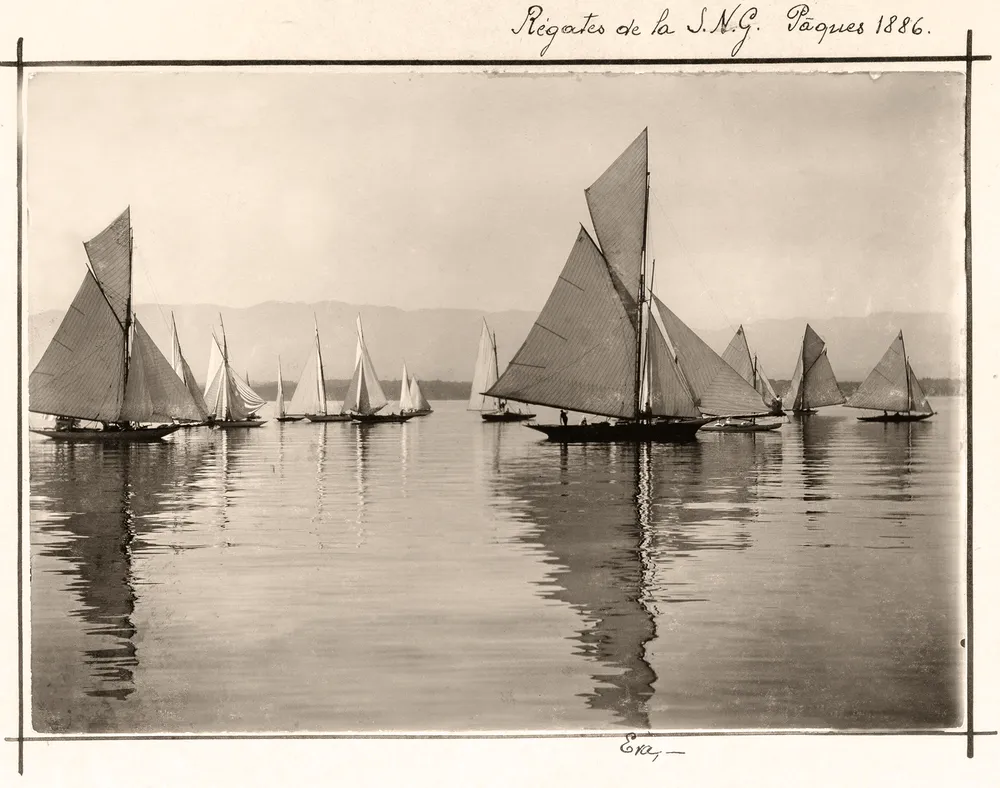The history of regattas on Lake Geneva has so far been the subject of few studies. A long history dating back to the 19th century, whose origins lie in a past of wars and political tensions. In the wake of last year’s inclusion of Lake Geneva regattas on the list of Switzerland’s intangible cultural heritage, historian Christophe Vuilleumier – who is also President of ASPRO Toucan – retraces the incredible chain of events that have made Lake Geneva, and Switzerland as a whole, a sailing nation. A historical saga to be discovered in this edition of Skippers and the next.
Since the 16th century, Geneva has maintained a war fleet whose crews were made up of boatmen who usually sailed on the barges that carried goods across the lake. In 1677, a naval military society called the “Exercice de la Navigation” was created by the Geneva authorities to enable the crews of military vessels to practice marksmanship. Gradually made up of representatives of the city’s bourgeoisie and patriciate, the Exercice regularly organized annual festivities, some of them sumptuous, such as the coronation of its king Pierre Favre in 1810, which the writer John Petit-Senn was to recall with nostalgia in 1856 in the columns of the Journal de Genève.
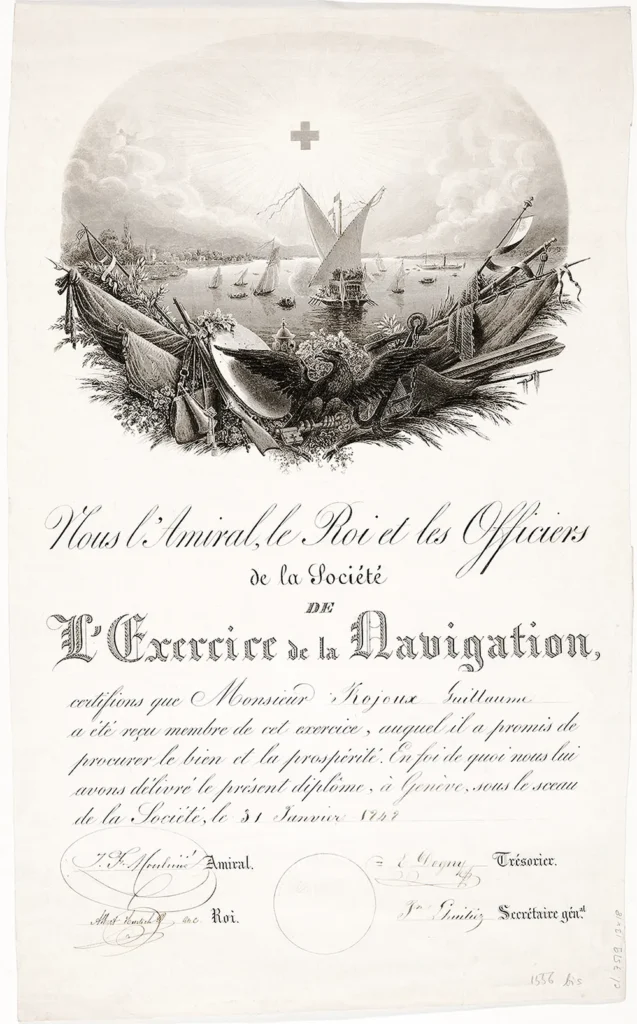
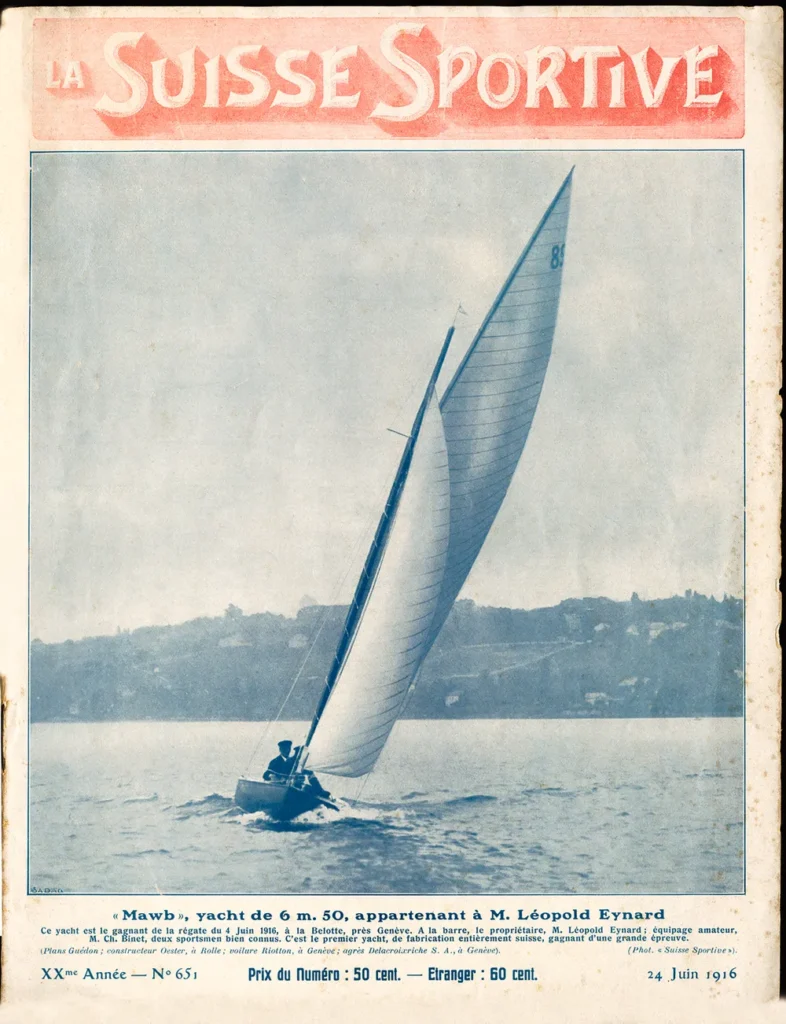
©Lake Geneva Museum

IN 1914
©Lake Geneva Museum
The 1810 festival would be the last before it was revived in 1825 with even greater success, bringing together the former galleys of the Navigation and Arquebuse, surrounded by a “swarm of boats of all shapes and sizes” who came to watch the shooting contests.
It was from this dynamic that the first regattas were born, all the more easily since the threats inherent in a naval attack had by then completely disappeared and Geneva had disbanded its flotilla during this first part of the 19th century, making shooting on the water increasingly anachronistic. It didn’t take long for L’Exercice to come up with new activities, based on challenge and competition in the same way as the shooting contests of previous decades. This is why, according to sources, the association organized its first regattas during the Navigation Festival on August 27, 1849.
The city of Calvin was not alone in having a naval militia of this type, as Nyon had had a similar society since the 18th century, christened the “Société de la Navigation de Nyon” in 1805, and whose objectives were limited to shooting and walks on the water.
Geneva, the leading organizer of regattas
The craze for naval competitions was widespread in many countries at the time. In 1851, the English Royal Yacht Club organized the Isle of Wight Regatta to coincide with the London World’s Fair, a famous race that would be renamed the America’s Cup a few years later when the New York Yacht Club won in 1857 with the schooner America.
The first competitions on Lake Geneva were of course more modest, as the first of them, in 1850, involved rowing boats, reminiscent of the old shooting practice which took place from this type of boat, as well as a few “sailboats”. Ten boats took part in these regattas, the flagship category of which, weighted rowboats, saw the victory of Mr. Lador’s Rôdeur, followed by Mr. Darier’s Dame du Lac and Mr. Sechehaye’s Vénitienne.
The innovation appealed, but the Exercice struggled to renew the event quickly. So, in 1854, the society created the “Cercle du lac” to organize the same year’s “Fête des régates”. The event, hailed by the press who noted the number of “spectators attracted by the hitherto rare attraction of regattas”, was set for July 28. The day’s racing, under the direction of Eugène Darier, the Admiral of the Exercice, began with cannon salutes announcing the rowing regattas, which continued throughout the morning. In the early afternoon, the sailboats competed on a course that took them from Pâquis to Port-Noir, then on to Sécheron and back to Pâquis, the headquarters of the Exercice de la Navigation.
It was a complete success. However, for financial reasons, the Exercice de la Navigation was to merge the following year with a sister military society, the Exercice de l’Arquebuse. Fearing that the memory of the old naval society would disappear, former members ensured the continuity of the “Cercle du lac” association, and continued its sporting activities by organizing an annual regatta day.
In 1856, banker François Bartholoni – the driving force behind the Lyon-Geneva railroad line and the choice of location for the Cornavin station – with a passion for the lake and the sailing boats he admired from his villa at La Perle-du-Lac (now the Geneva Museum of the History of Science), financed the prizes for the various categories of boats taking part in the July 10 regattas. The tradition had begun and would never end!
Short-lived associations
A number of short-lived sailing associations were formed in Geneva’s lakeside communities, from Bellerive to Genthod, bearing exotic names such as “Peaux-Rouges”. In 1872, sailor Gabriel Battié saw the merit of uniting the various initiatives, and succeeded in bringing together several players to form a society called the “Amis de la Navigation”, which soon became the “Société Nautique de Genève”. Some associations, however, such as the “Faces-Pâles” in La Belotte, preferred to remain independent and organize their own regattas right up to the eve of the First World War, giving the competitions sometimes evocative names such as the “Coupe Sémi Zopfi”. As sailing had become one of the sports of choice for a wealthy social class that did not hesitate to bring in yachts from England, the “Société Nautique de Genève” soon counted among its members representatives of Geneva’s leading families, as well as foreign aristocrats such as Baroness Adolphe de Rothschild, Prince Georges Valentin Bibescu and Count Hermann de Pourtalès.
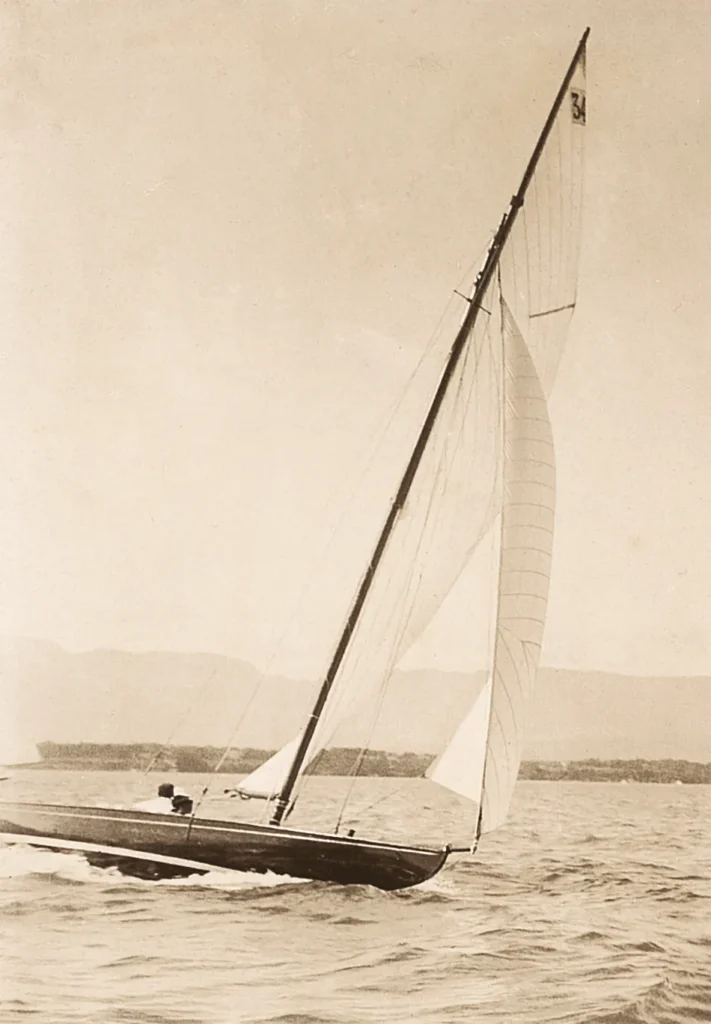
FIRST PART OF THE 20th
CENTURY.
©Library of Geneva
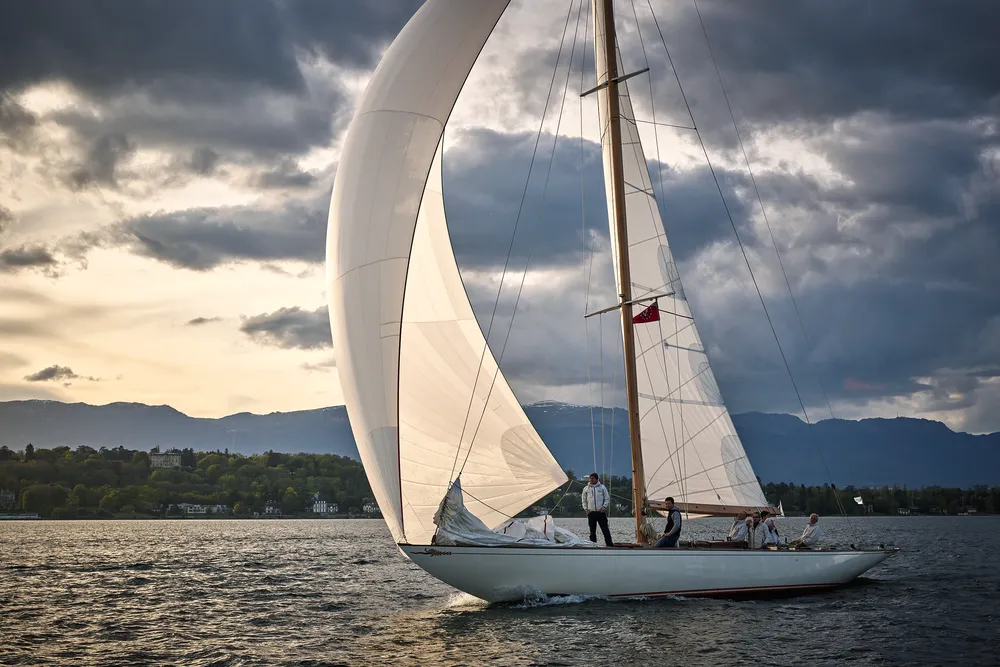
©Loris von Siebenthal
Société Nautique de Genève
In 1882, ten years after its creation, the “Société Nautique de Genève” took over the organization of the regattas that the “Cercle du lac” had initiated some thirty years earlier. These regattas immediately established themselves as a sporting and social event, for which the shipbuilders of Lake Geneva made considerable efforts, offering ever more efficient sailing boats. In 1888, Genevan shipwright Alexandre Pouly launched the largest pleasure sailboat ever built on the lake in front of the Eaux-Vives quay – a 14-metre long, 3.20-metre wide longboat with a 2.25-metre draught – with the aim of entering it in the “Fête des régates” the following week. Fifteen years later, the Pouly yard launched the Phoebus, a 3-tonne sailing boat designed by Lyon-born naval architect Auguste Godinet, which remains one of the oldest boats to sail the waters of Lake Geneva.
During these same years, English banker Daniel Fitzgerald Packenham Barton, British consul in Geneva from 1886 to 1897, who had lived in Geneva since the age of 16, was a patron of the arts and an experienced sailor. In particular, he had several sailing ships built: the Saint-Frusquin, aboard which he lived during the summer months and of which a model can be seen in the Musée du Léman in Nyon, as well as the Aïda, the Peri, the Père-Ali and the Squaw; a veritable fleet that Barton housed at Le Creux-de-Genthod. And with the staging of the Swiss National Exhibition in Geneva in 1896 and the sporting competitions that accompanied it – including sailing regattas that were included for the first time in the program of the Olympic Games in Athens that same year – sailing took off even more. But it was a woman, Hélène de Pourtalès, who definitively established the sport on Lake Geneva waters. A regatta competitor from Geneva, she took part in the 1900 Olympic Games in Paris with her husband Hermann de Pourtalès. It was the first time the Games had been open to women. The couple sailed aboard their sailboat, the Lerina, a typical 20-footer from Lake Geneva, and were among the finalists. Hélène de Pourtalès went on to win the final race and the gold medal as skipper on May 22, making her the first female Olympic champion in history.
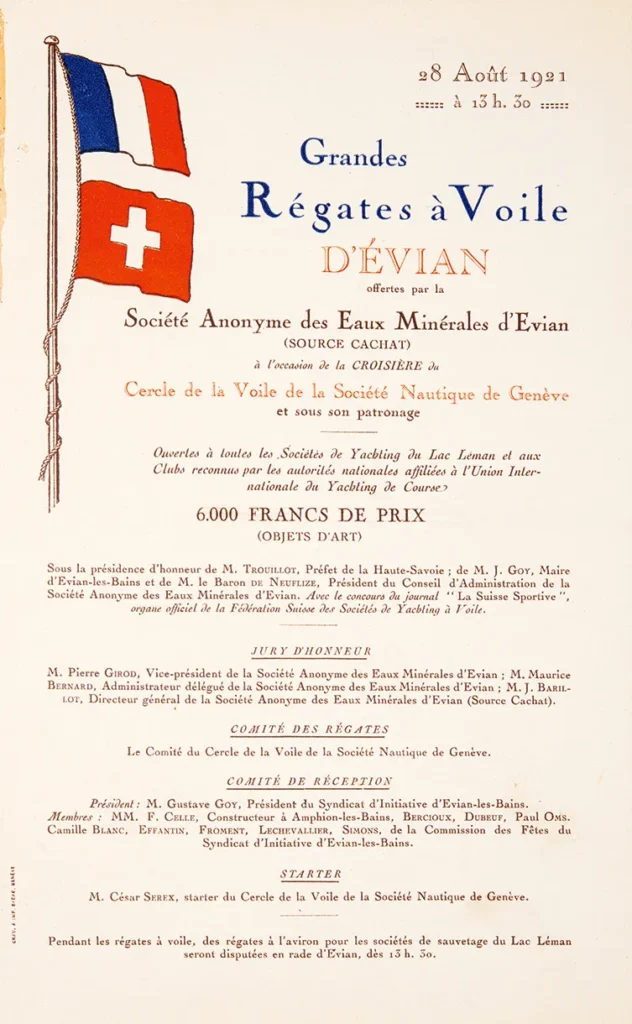
©Lake Geneva Museum
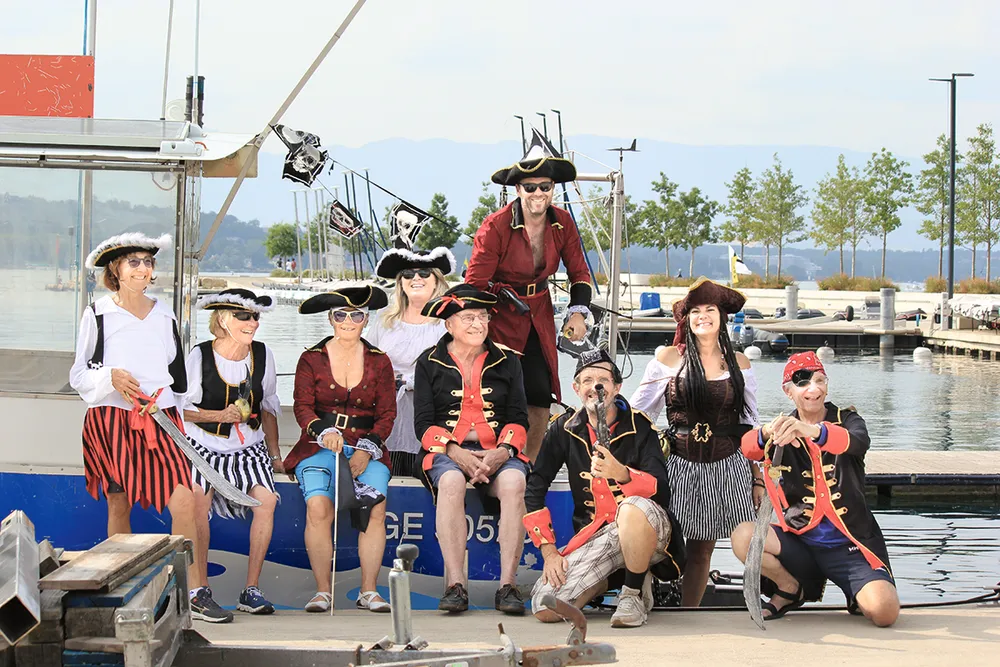
SNG SAILING WEEK, THE CONVIVIALITY
REMAINS.
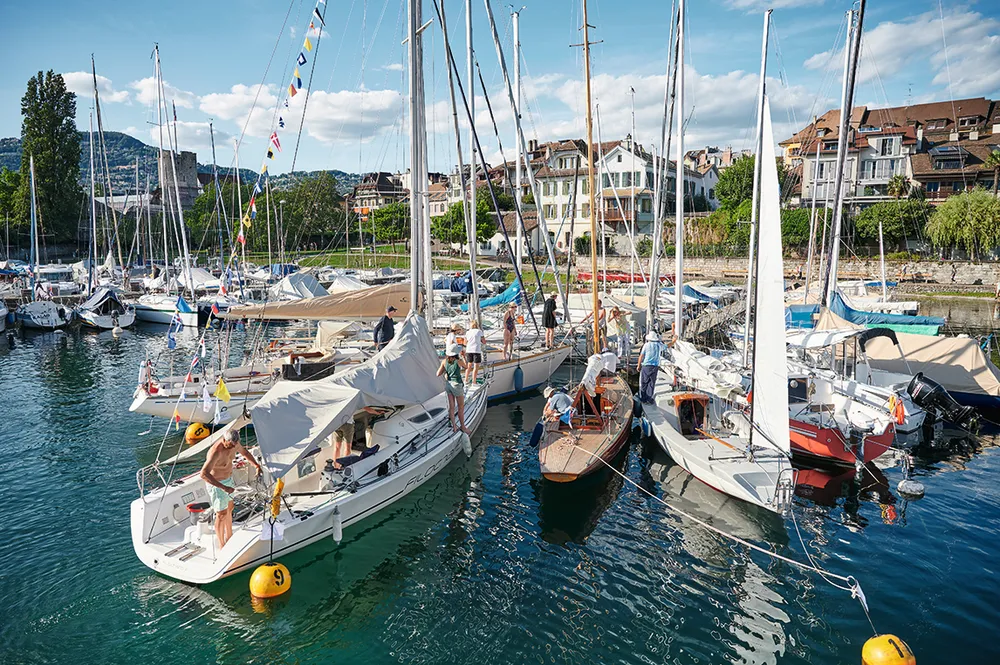
©Yoann Leliev
Léopold Eynard
And as the number of sailboats on the lake multiplied, so did the desire for competition, particularly among the golden youth of Geneva’s patriciate. In 1902, Léopold Eynard, who until then had been a member of the “Société Nautique Rolloise”, joined the “Société Nautique de Genève” to create the “Cercle de la Voile” with a few friends, and to propose new regattas. The Coupe Iseult, donated by Mr. Pictet de Rochemont, was launched in the wake of the Cercle’s creation; a race whose course ran from Bellerive to Coppet and Versoix and back; eight nautical miles that could be doubled depending on wind conditions. The “Société Nautique de Genève”, still through the Cercle, was soon to organize three new races for its members: the Coupe Hentsch, whose course remained classic and limited, i.e. from Bellerive to Versoix, La Belotte and back; the Coupe Sarina, which doubled this same course; and the Coupe de Montalègre from 1903. The Geneva-based company was also to set up an ambitious event, the Coupe du Grand-Lac, which required sailboats from Petit-Lac to travel to Vaud waters.
This marked the beginning of the spread of regattas around Lake Geneva.
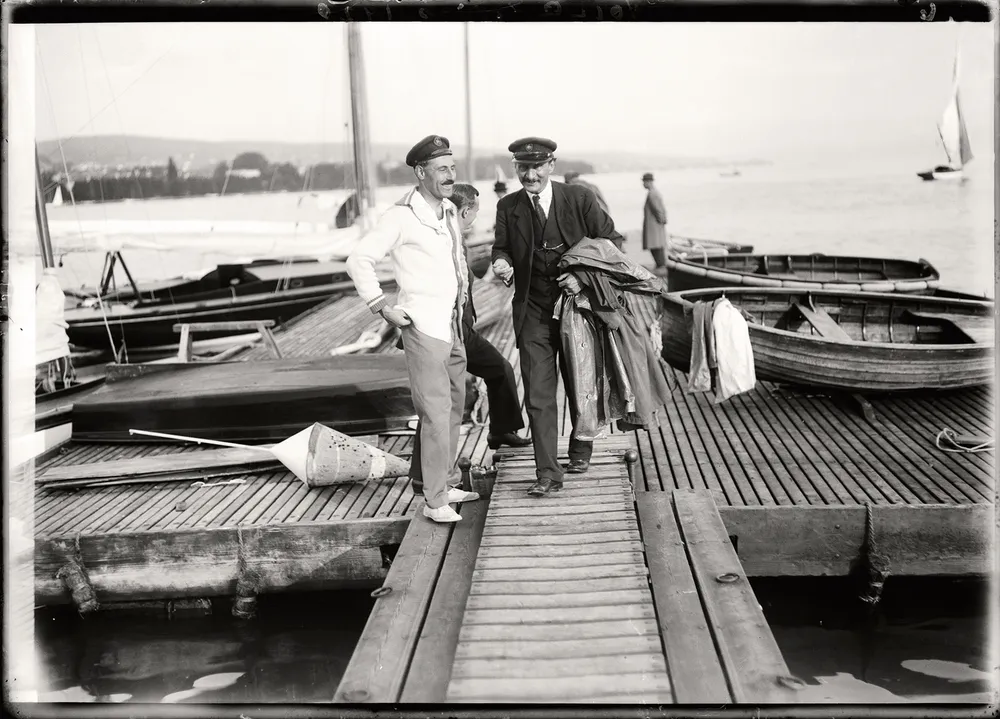
BY LÉOPOLD EYNARD,
CIRCA 1920.
©Keystone
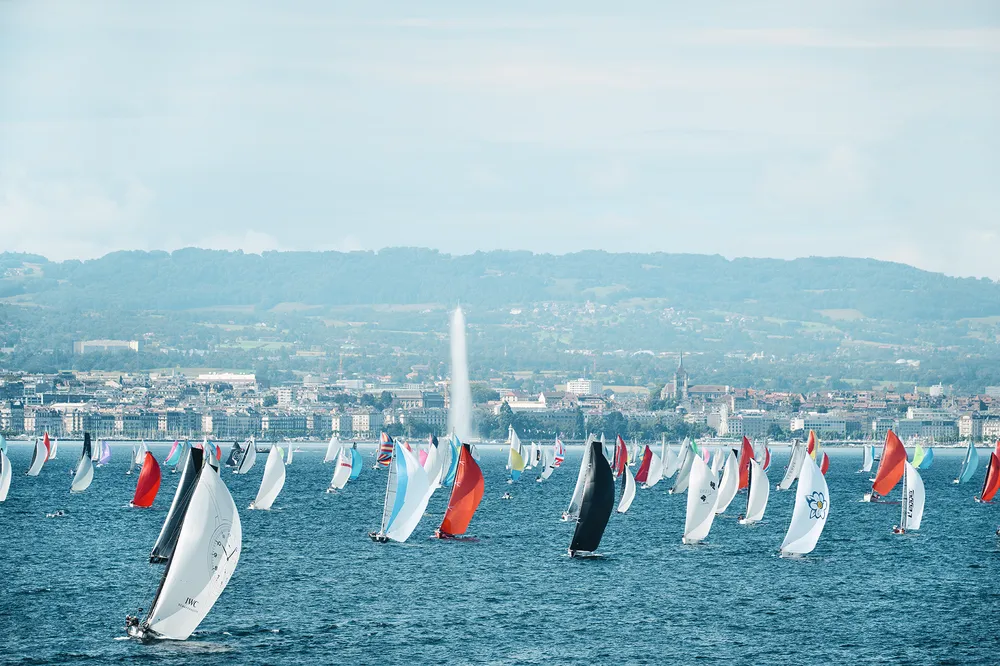
©Loris von Siebenthal


